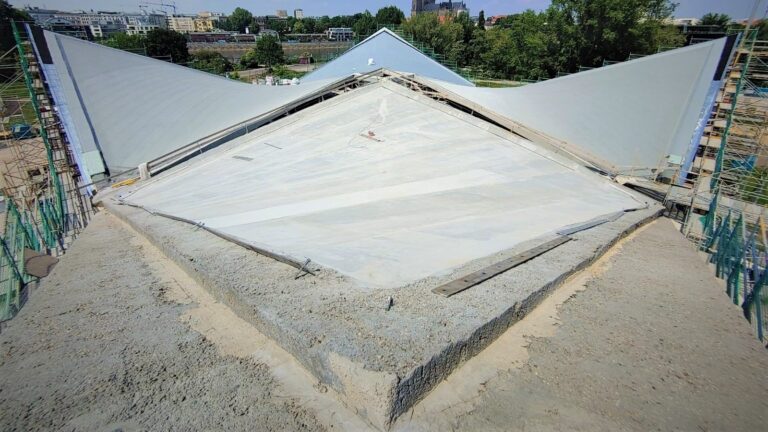
Mast Foundation
FDM+
The FDM+ Mast Foundation program is used to verify foundations of all kinds of poles and towers as well as of columns for noise-protection walls, signal boards and similar structures. Mast foundations are typically block (pad) foundations that are embedded in the ground. The foundations are loaded by a moment in the first place. Their stability is ensured by the earth resistance. The serviceability and stability verifications of these foundations are performed in accordance with the subgrade reaction modulus method published in 1989 in the German Bautechnik magazine by S. Steckner.
Discover now more programs from the section Foundation!
SHOW MOREMaterial
- Standard concrete and lightweight concrete are selectable
- Reinforced concrete with selectable concrete qualities and steel grades
Structural system
- Square and rectangular foundations
- As a differentiation criterion to shallow foundations and pile foundations, the ratio of the dimensions must be in the range 2/3 < D/A <= 4 (with A = width in the loading direction and D = foundation thickness) – this must be checked manually
- Selection of the reinforcement layer for the bending design
Soil:
- Freely selectable soil parameters
- Subgrade reaction moduli are automatically calculated from ϕ and D
- Active and passive wall friction angles are also derived automatically
Ground surface:
- Horizontal or continuously ascending
- Defined by the active and passive ground-surface inclination angle
Loads
- Any loads for uniaxial effects of actions:
- Vertical axial force Vz
- Horizontal concentrated loads in the x-direction
- Concentrated moments about the y-axis
- Free assignment of loads to types of actions according to EC 0 as well as to concurrency and alternative groups.
- Automatic combination of loads for the calculation of the decisive design load case for each verification.
Serviceability verification
- Definition of the permissible inclination
- Serviceability verification via the inclination by means of reaction moments
Stability verification
- Definition of the safety factor for the stability verifications
- Consideration of a minimum reinforcement
- Stability verification by means of earth pressures and reaction forces via design moments
- Bending design as per selected standard
Document file formats
- Word
- Printer
Output
- Detailed output of the stability and serviceability with all intermediate values form the design approach by Steckner
- Output of the bending design with the required reinforcement quantity
Transfer options
- Slabs by Finite Elements PLT
- Isolated Foundation FD+
- Block Foundation FDB+
- Strip Foundation FDS+
- Reinforced Raft Foundation FDR+
- Ground Failure Analysis GBR+
- Beam on Elastic Foundation BEB+
- Soil Settlement SBR+
Reinforced concrete
- EN 1992
- DIN EN 1992
- ÖNORM EN 1992
- PN EN 1992
- NF EN 1992
- BS EN 1992
- DIN 1045-1
- ÖNORM B 4700
Support resources
News

“With the FRILO Suite, we benefit from the use of all programs”
With the switch to the FRILO Suite, the engineering office concon has decided to rely on the FRILO subscription model. The reasons of the long-standing customer are manifold.

FRILO & CARBOrefit® | The calculation with carbon concrete pays off
With CARBOrefit® an process that enables renovation and reinforcement with carbon concrete has been integrated into the FRILO Software.




